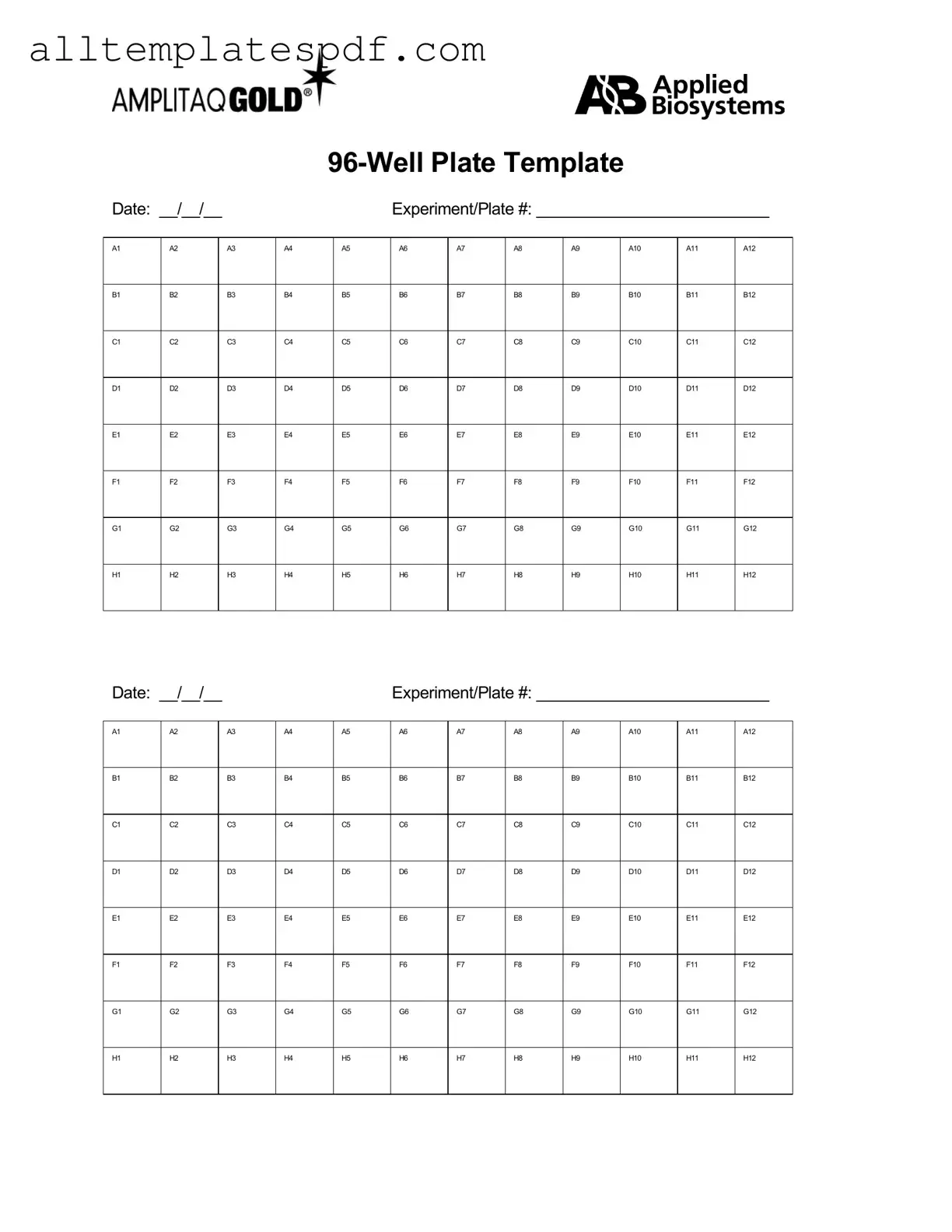Filling out the 96 Well form can be a straightforward task, but many individuals encounter common pitfalls that can lead to delays or complications. Understanding these mistakes can help ensure that the form is completed correctly and efficiently.
One frequent error is incomplete information. When individuals forget to fill in all required fields, it can cause significant delays in processing. It's essential to double-check that every section is filled out as instructed. Even a small omission can lead to a request for additional information, slowing down the entire process.
Another common mistake is illegible handwriting. If the form is filled out by hand, clear and legible writing is crucial. Poor handwriting can lead to misinterpretation of important details. When possible, consider typing the information or using printed labels to avoid this issue altogether.
People often confuse required fields with optional fields. It’s important to read the instructions carefully to understand which sections must be completed. Skipping optional fields may not cause issues, but missing required ones can lead to rejection of the form.
Additionally, many individuals fail to review their information before submission. Taking a moment to look over the completed form can help catch any errors or inconsistencies. A quick review can save time and prevent unnecessary back-and-forth communication.
Using outdated or incorrect contact information is another mistake that can cause issues. Always ensure that your contact details are current and accurate. This will facilitate communication and help in resolving any potential problems swiftly.
Another error to watch out for is not following submission guidelines. Each form may have specific instructions regarding how it should be submitted, whether electronically or by mail. Ignoring these guidelines can lead to delays or even rejection of the submission.
Some individuals also neglect to keep a copy of the completed form. Having a copy for your records can be invaluable. If any questions arise later, you will have the information readily available for reference.
In some cases, people may miss deadlines for submission. It’s crucial to be aware of any time constraints associated with the form. Marking deadlines on a calendar can help keep track of important dates and ensure timely submission.
Lastly, failing to seek assistance when needed can lead to mistakes. If there is any confusion about how to fill out the form, reaching out for help is always a good idea. Whether it’s asking a colleague or consulting the instructions, getting clarification can prevent errors.
By being aware of these common mistakes and taking steps to avoid them, individuals can ensure a smoother experience when filling out the 96 Well form. Attention to detail and careful review are key components of successful completion.
